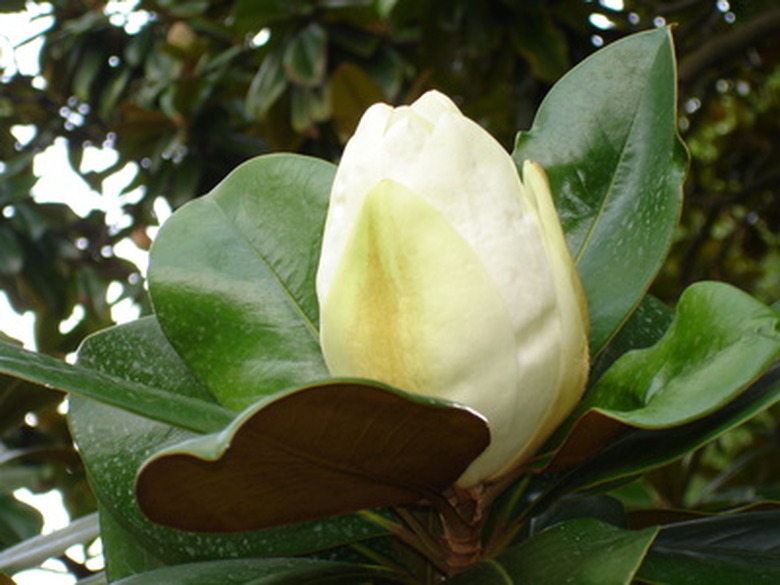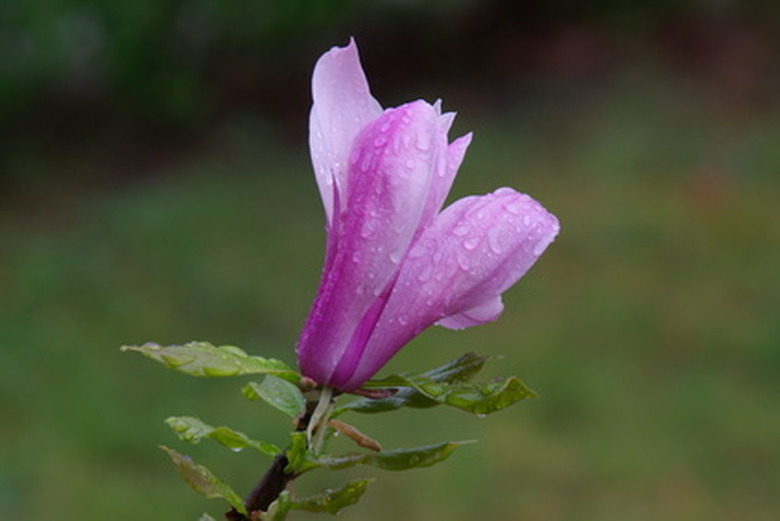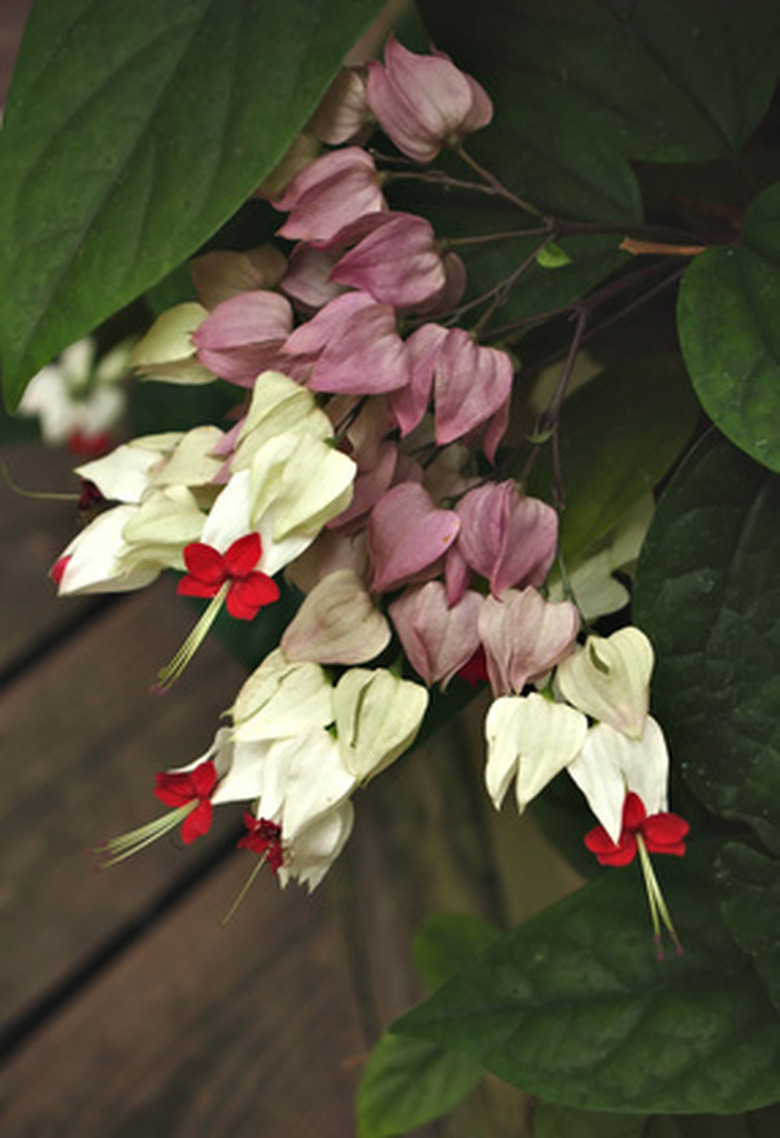List Of Dicot Flowers
Dicots are one of the two main groups of flowering plants; the other is monocots. One major distinction is that dicots have two cotyledon, or embryonic, seed leaves. Monocots have only one. Another is that the flower parts–petals, stamen and so on are in multiples of four or five. In monocots, the flower parts are in multiples of three. Magnolias, honeysuckle and poppies are dicots. Lilies, irises and orchids are among the monocots.
- Dicots are one of the two main groups of flowering plants; the other is monocots.
- In monocots, the flower parts are in multiples of three.
Golden Trumpet
Allamanda cathartica, commonly known as golden trumpet, is a twining vine with large yellow flowers and bright green leaves. The trumpet-shaped flowers can reach 6 inches in diameter. Seed pods form after the flowers finish blooming. When the pod dries, winged seeds are released. This easy-to-grow tropical vine can reach 12 feet in length, but can be cut back to resemble a bush. The plant is toxic and the sap irritates the skin. Some varieties of golden trumpet have been bred to be especially fragrant.
- Allamanda cathartica, commonly known as golden trumpet, is a twining vine with large yellow flowers and bright green leaves.
- This easy-to-grow tropical vine can reach 12 feet in length, but can be cut back to resemble a bush.
Oleander
Nerium oleander is a large, evergreen shrub with flowers that range in color from white to deep red to yellow. The plant grows quickly and can reach heights of 20 feet, but is usually trimmed to 6 to 10 feet. The bright green leaves are from 4 to 10 inches long. The plant is hardy and thrives in conditions that would be deadly to other plants. Oleander is native to Southeast Asia, the eastern Mediterranean and northern Africa. Oleander can be toxic and skin contact can cause reactions. Smoke from burning oleander is a lung irritant.
- Nerium oleander is a large, evergreen shrub with flowers that range in color from white to deep red to yellow.
- The plant is hardy and thrives in conditions that would be deadly to other plants.
Cassava
Manihot esculenta, or cassava, has dark green, lobed leaves that can grow to a foot across and have leaf stems that can grow up to 2 feet long. Flowers are white or orange. Classified as a tree or semi-woody shrub, the cassava can grow to 20 feet tall. The roots are edible. Modern cultivars only require peeling and cooking. Primitive cassavas contain cyanide and require extensive processing before they are edible. Processing includes removing all of the outer layer and boiling in several changes of water. Cassava is also processed to make tapioca, soaps, sugar and alcoholic beverages.
- Manihot esculenta, or cassava, has dark green, lobed leaves that can grow to a foot across and have leaf stems that can grow up to 2 feet long.
Bleeding Heart Vine
Clerodendrum thompsoniae, or bleeding heart vine blooms in both summer and winter in its native African climate. It has evergreen, whorled leaves and profusions of blooms that turn pink as the flower ages. The plant gets its name from the red calyx on the heart-shaped white flower. Also called glory bower, bleeding heart vine can grow to 10 to 12 feet in height. While beautiful, the plant is extremely hardy and can be hard to eradicate if it sends unwanted runners into neighboring plots.


